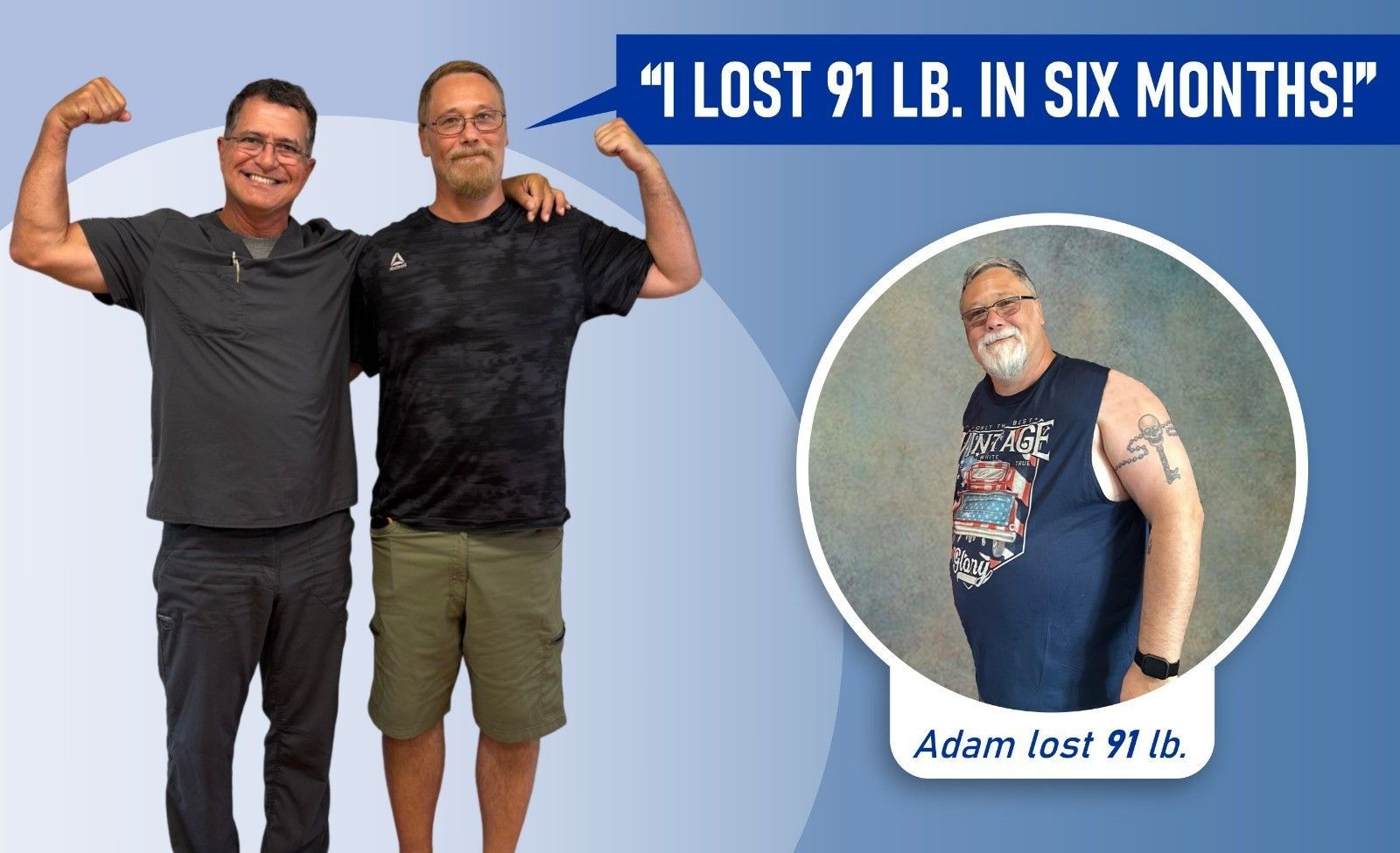Weight Loss Surgery Options in Jacksonville, Florida
Restrictive vs. Malabsorptive Bariatric Procedures
Each year, bariatric surgery helps hundreds of thousands of people lose substantial amounts of weight and avoid many serious obesity-related health conditions, like cardiovascular disease, high blood pressure and type-2 diabetes. There are several different types of bariatric procedures being performed today, but all of them fall into one of three categories: restrictive, malabsorptive or a combination of restrictive and malabsorptive. The success of any of the bariatric surgeries will depend in patient’s adherence to life style and dietary recommendations.

List of Services
-
Restrictive weight loss surgeryList Item 1
Restrictive weight loss surgery uses techniques that decrease the stomach’s natural capacity while leaving the rest of the gastrointestinal tract intact. Sleeve gastrectomy and lap band surgery are two of the most popular types of restrictive bariatric surgery.
In sleeve gastrectomy, about 80 percent of the stomach is removed, including the portion responsible for producing the “hunger hormone,” ghrelin. While some people consider the sleeve to be purely restrictive, others classify it as a combination treatment since it can reduce the body’s absorption of some nutrients that normally are broken down by stomach acid.
In lap band surgery (also called gastric banding), a silicone band is used to partition a small portion of the stomach. This is the portion that fills with food when you eat. Like sleeve gastrectomy, because the stomach size is significantly decreased, patients reaches satiety (not hungry) faster. They also feel full faster and therefore consume less food. However, unlike sleeve gastrectomy, the lap band does not require removal of any of the stomach, making it the only type of bariatric surgery that’s reversible.
-
Malabsorptive weight loss surgeryList Item 2
In the U.S., gastric bypass surgery is the oldest performed bariatric surgery. Biliopancreatic Diversion with duodenal switch although not performed routinely, it is also been used. Both procedures impose significant malabsorption with dietary change and has the greatest impact on lifestyle afterward.
Along with reducing the size of the stomach, those procedures involve rerouting the intestines so that a significant portion of the upper part of the small intestines, where nutrients such as fat, protein, and vitamins are absorbed, is bypassed or omitted from the route that food now takes. Because nutrients now pass through a shortened intestine, less opportunity exists for nutrient absorption. This is the malabsorptive component of the surgery.
Because less nutrients are absorbed, additional weight is lost. However, because nutrients are not absorbed, patients MUST follow the required supplementation of SPECIAL multi vitamins, minerals, and protein after those procedures to minimize the complications.
Most of us can agree that as long patients follow recommendations, most patients will benefit from any procedure. Unfortunately the opposite is also true, when the lack of adherence can be associated with less weight loss.
In Jacksonville, Florida, all bariatric procedures regardless of whether they are restrictive or malabsorptive have benefits and risks that must be considered when deciding if surgery is a good option for you. The more you can learn about your surgery and the lifestyle changes that each procedure requires afterward, the better prepared you will be for long-term weight loss success.
Weight Loss Surgery Options Resources
Patient Success Stories







